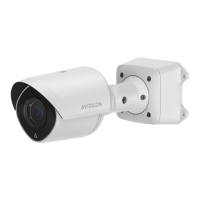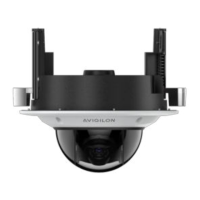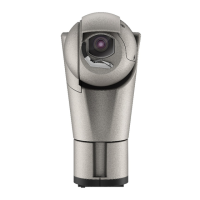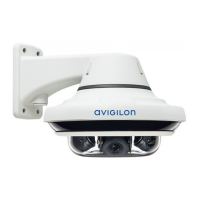5. Click Apply to save your changes.
Compression and Image Rate
On the Compression and Image Rate page, you can change the camera’s compression and image quality
settings for sending video over the network.
Note: If a camera with video analytics or unusual motion detection is physically moved or adjusted,
or if the focus or zoom level is changed, reset the learning progress to provide accurate results. If the
camera's image rate and compression or display settings are updated, the learning progress may
reset automatically.
To enable easy access and lower bandwidth usage, the web interface only displays video in JPEG format.
The settings on this page only affect the video transmitted to the network video management software.
Avigilon High Definition IP cameras have dual stream capabilities. If the camera’s streaming format is set to
H.264 or H.265, the camera's web interface can still display live video in JPEG format.
Note: The camera may automatically adjust compression quality in order to abide by the bandwidth
cap specified.
1. In the Format drop-down list, select the preferred streaming format for displaying the camera video in
the network video management software.
If you are using the Onboard Storage feature, select H.264 or H.265. For more information, see
Enabling Onboard Storage on page27.
2. In the Max Image Rate field, enter how many images per second you want the camera to stream over
the network.
Note: Adjusting the image rate across the 30 fps boundary will stop the video stream for a
few seconds.
If the camera is operating in High Framerate mode, then the maximum image rate is increased. For
more information on the High Framerate mode, see General on page6.
3. In the Max Quality drop-down list, select the desired image quality level.
Image quality setting of 1 will produce the highest quality video and require the most bandwidth.
4. In the Max Bitrate field, enter the maximum bandwidth the camera can use.
Compression and Image Rate 20

